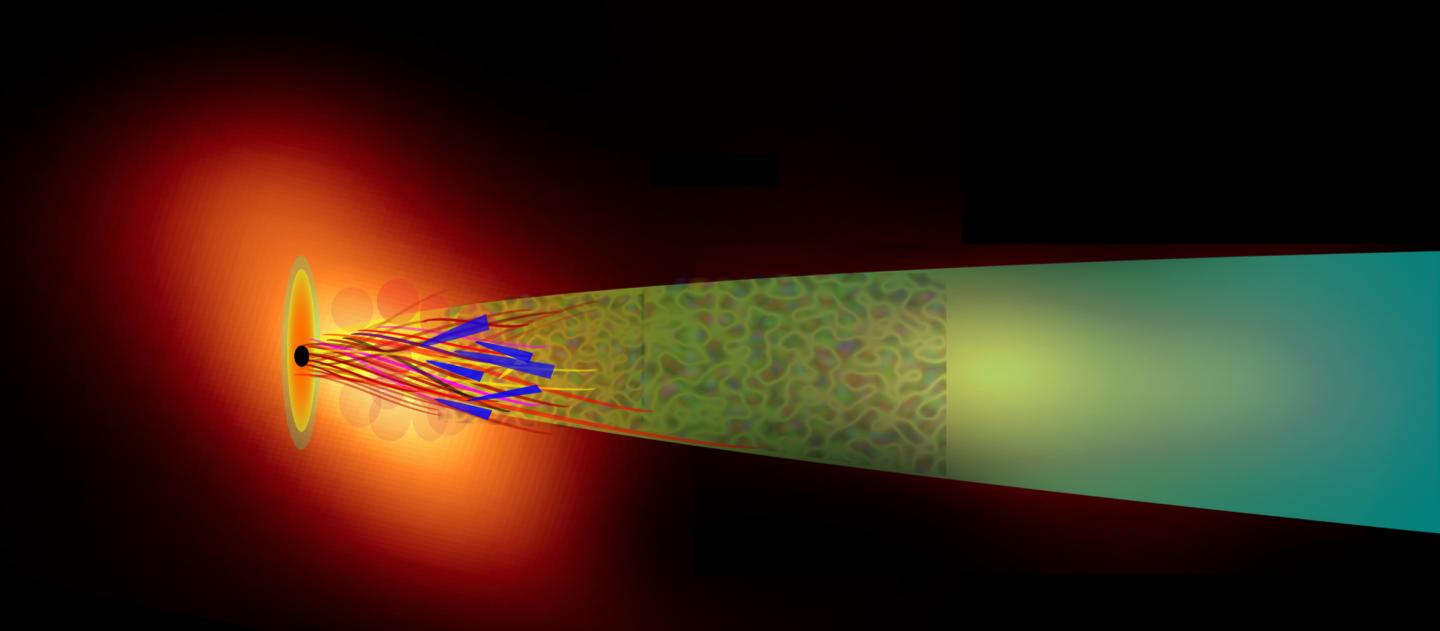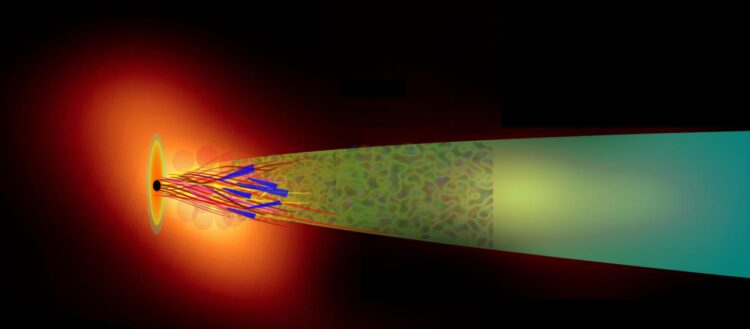
Credit: Amit Shukla / Indian Institute of Technology Indore
Black holes are at the center of almost all galaxies that have been studied so far. They have an unimaginably large mass and therefore attract matter, gas and even light. But they can also emit matter in the form of plasma jets – a kind of plasma beam that is ejected from the centre of the galaxy with tremendous energy. A plasma jet can extend several hundred thousand light years far into space.
When this intense radiation is emitted, the black hole remains hidden because the light rays near it are strongly bent leading to the appearance of a shadow. This was recently reported by researchers of the Event Horizon Telescope (EHT) collaboration for the massive black hole in the giant ellipse galaxy M87.
In quasar 3C279 – also a black hole – the EHT team found another phenomenon: At a distance of more than a thousand times the shadow of the black hole, the core of a plasma jet suddenly lit up. How the energy for this jet could get there as if through an invisible chimney was not yet known.
Extremely flickering gamma radiation detected
This quasar has now been observed with the NASA space telescope Fermi-LAT by the astrophysicist Amit Shukla, who until 2018 did research at Julius-Maximilians-Universität (JMU) Würzburg in Bavaria, Germany. He now is working at the Indian Institute of Technology in Indore. Shukla discovered that the core of the jet, which was found in the millimeter wavelength range, also emits high-energy gamma radiation, but with an extremely flickering brightness. This brightness can double within a few minutes, as reported in the journal Nature Communications.
The special pattern of the sequence of brightness changes is characteristic of a universal process called magnetic reconnection, which occurs in many astrophysical objects with strong magnetic fields. Solar activity also has to do with the dynamics of magnetic fields and reconnection. This was recently demonstrated by observing “campfires” in the solar atmosphere with the “Solar Orbiter” mission of the European Space Agency ESA.
Invisibly stored energy is suddenly released
But back to the quasar 3C279: “I saw how the analysis of the data revealed the special pattern of magnetic reconnection in the light curve. It felt as if I had suddenly deciphered a hieroglyph in the black hole alphabet,” says Amit Shukla happily.
During reconnection, energy that is initially stored invisibly in the magnetic field is suddenly released in numerous “mini-jets”. In these jets, particles are accelerated, which then produce the observed gamma radiation. Magnetic reconnection would explain how the energy reaches the jet’s core from the black hole and where it ultimately comes from.
Energy from the spinning black hole
Professor Karl Mannheim, head of the JMU Chair of Astronomy and co-author of the publication, explains: “Spacetime near the black hole in the quasar 3C279 is forced to swirl around in corotation. Magnetic fields anchored to the plasma around the black hole expel the jet slowing down the black hole’s rotation and converting part of its rotational energy into radiation”.
###
Media Contact
Karl Mannheim
[email protected]
Original Source
https:/
Related Journal Article
http://dx.





